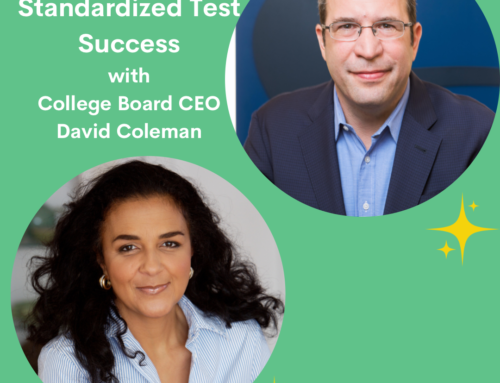Parents can use all the help we can get to encourage our sons (and daughters) to see math as an interesting and useful discipline, especially as we encourage them to pursue studies in the STEM fields. As a recent article in Education Week reveals, museums around the country are providing this help by developing programs and exhibits to encourage children to think about math as a fun and useful tool.
In New York City, a former hedge fund analyst has recently opened the National Museum of Mathematics located at 11 East 26th Street between Fifth and Madison Avenues. At “MoMath”, children dance on polygons in a light activated math square, ride an oversize tricycle with square wheels on a bumpy track, and frolic in front of screens that illustrate fractals during their fun-filled hands on visit to this museum. As the Education Week article found here explains, MoMath’s goal is for its visitors to see that math is about thinking and discovery, not just rote memorization, and that it is everywhere—from highway design to musical composition to roller coaster construction.
The MoMath website, found here, is filled with opportunities for children to become more engaged in mathematics. Among them is a summer math camp program, Transformations, which offers one week Math camps for 4th through 8th graders at the museum, with need based scholarships available to ensure that all children have a chance to participate. Their summer program schedule also boasts lots of free events for families to enjoy, including MoMath story time, a Scrabble strategy session with a Scrabble national champ, and “Folding in Geometry”, featuring origami instruction for the entire family. “Changing perceptions is our goal,” explains Cindy Lawrence, the co-executive director of MoMath. “From the minute people walk in the door, we try to highlight the creative side of math: that it’s colorful, it’s beautiful, it’s exploratory, fun and engaging. None of these are words people typically associate with math.”
Across the country science museums are developing fun and accessible math exhibitions in an effort to inspire students to think differently about math. The Exploratorium in San Francisco developed the Geometry Playground and Garden, which is designed to change the way people think about geometry by “engaging their hands, brain, and body in playful investigations of this most visible branch of math”. Visitors are encouraged to explore the Geometry Garden to experience “the beauty that emerges from the basic rules of geometry”. The Geometry Playground is a traveling exhibition which will visit other cities including Oklahoma City, OK and Lehi, Utah.
The Oregon Museum of Science and Industry has recently developed the Design Zone, with 25 exhibits to engage 10- to 14-year-olds in algebraic thinking. Karyn Bertschi, a senior exhibit developer at the Portland museum, explains the focus on algebra: “People think about algebra as a gatekeeper subject. Without success in it, many students are blocked from other opportunities.” The 6,000-square-foot exhibit has been touring the country and is booked at museums through 2015. Check the Design zone tour schedule, found here, to see if it is coming to a museum near you.
The Science Museum in Minnesota, the Museum of Science in Boston, the Museum of Life and Science in Durham, North Carolina and Explora in Albuquerque, New Mexico have collaborated with two research centers (with National Science Foundation support) to develop Math Moves!, long-term math museum environments that children can interact with over multiple visits and over several years. The Math Moves website, found here, provides details of the exhibitions and includes teacher’s guides to the exhibition, and additional math enrichment activities for families and educators.
Parents, check these websites and your local museums to find math exhibits near you, and make plans to take your children on a summer learning adventure. If you live in or around NYC, a visit to MoMath is a must. (I plan to grab my youngest and head there; will report back.) Let’s do our part to help our sons and daughters find out how cool math can be!





